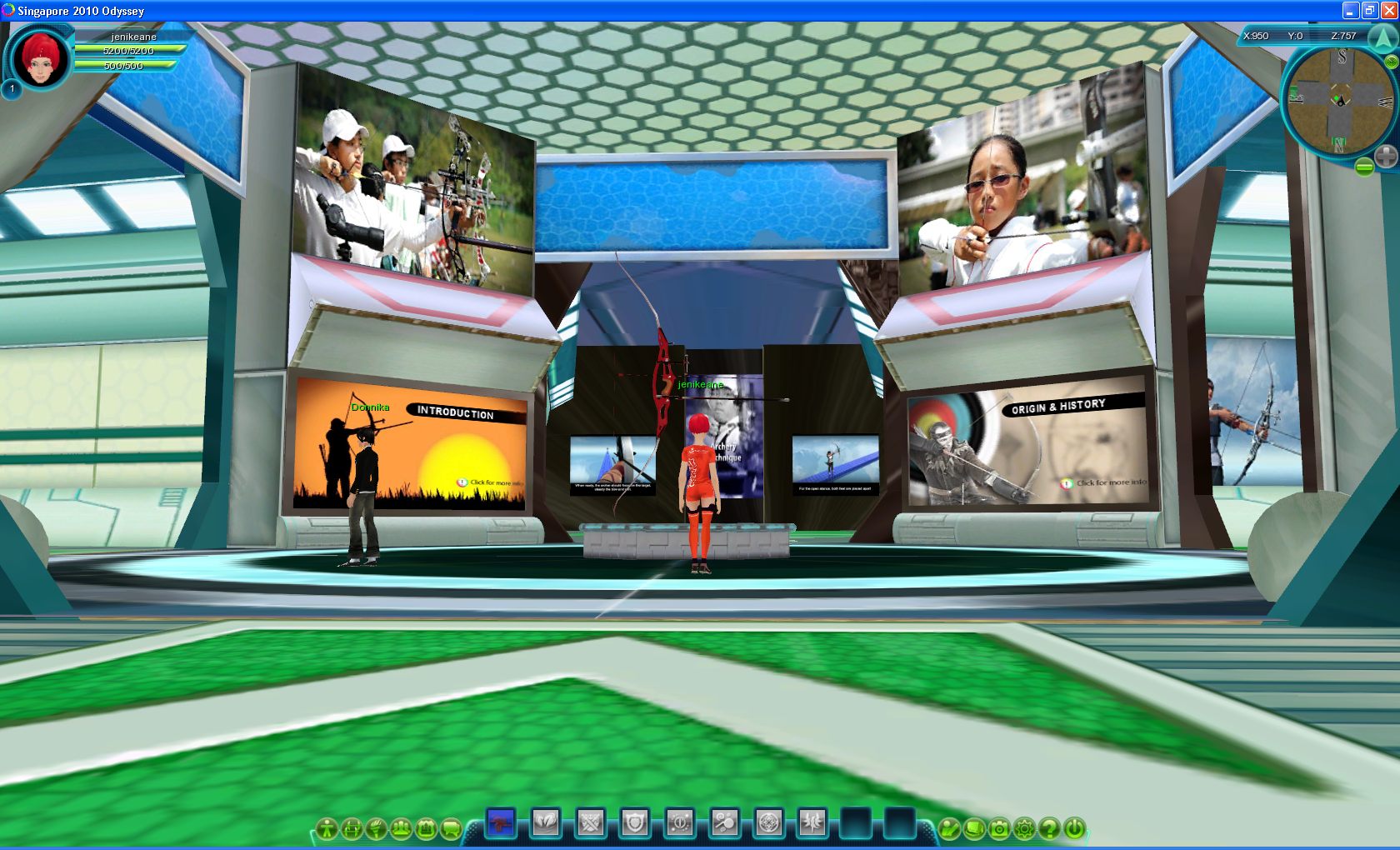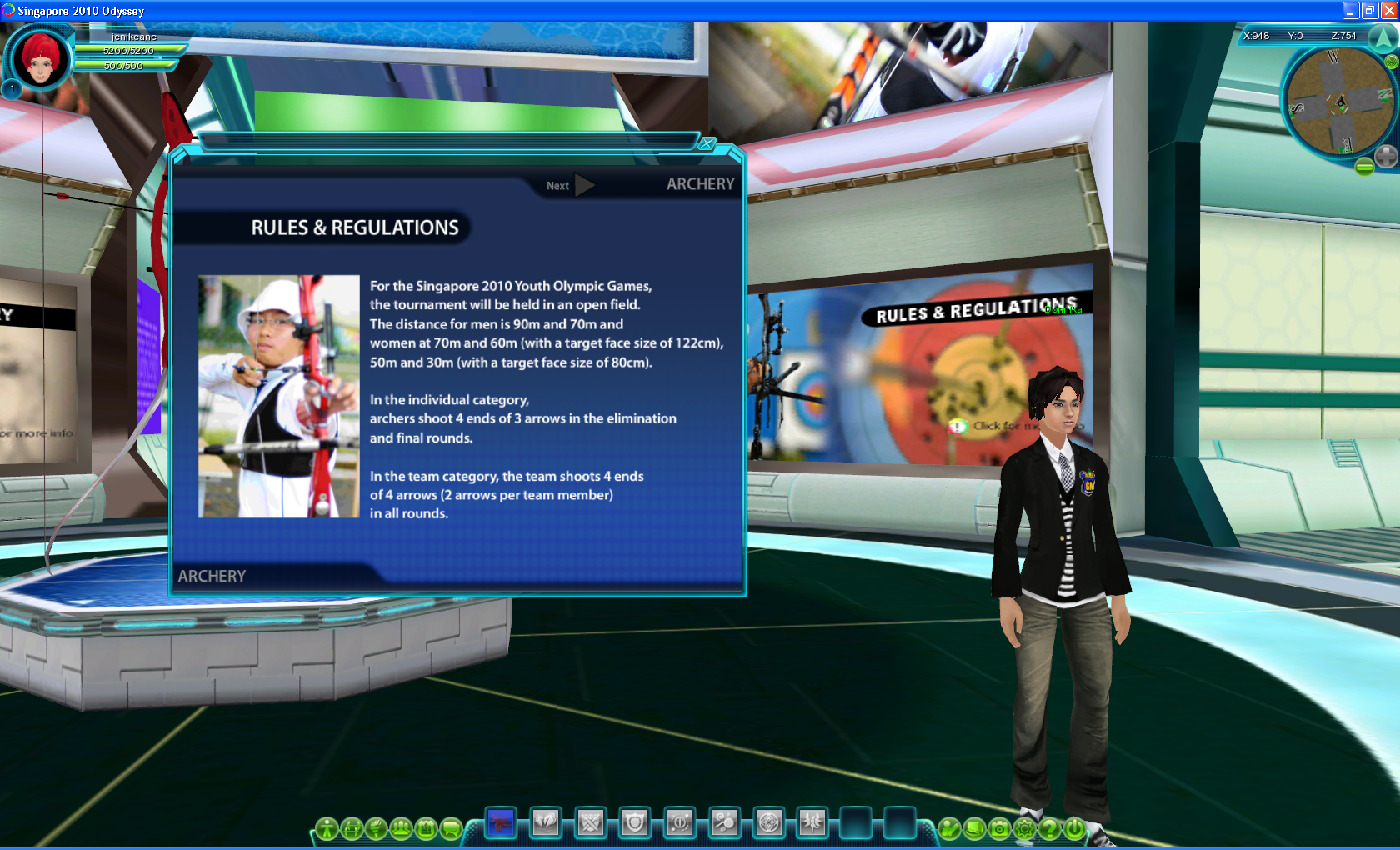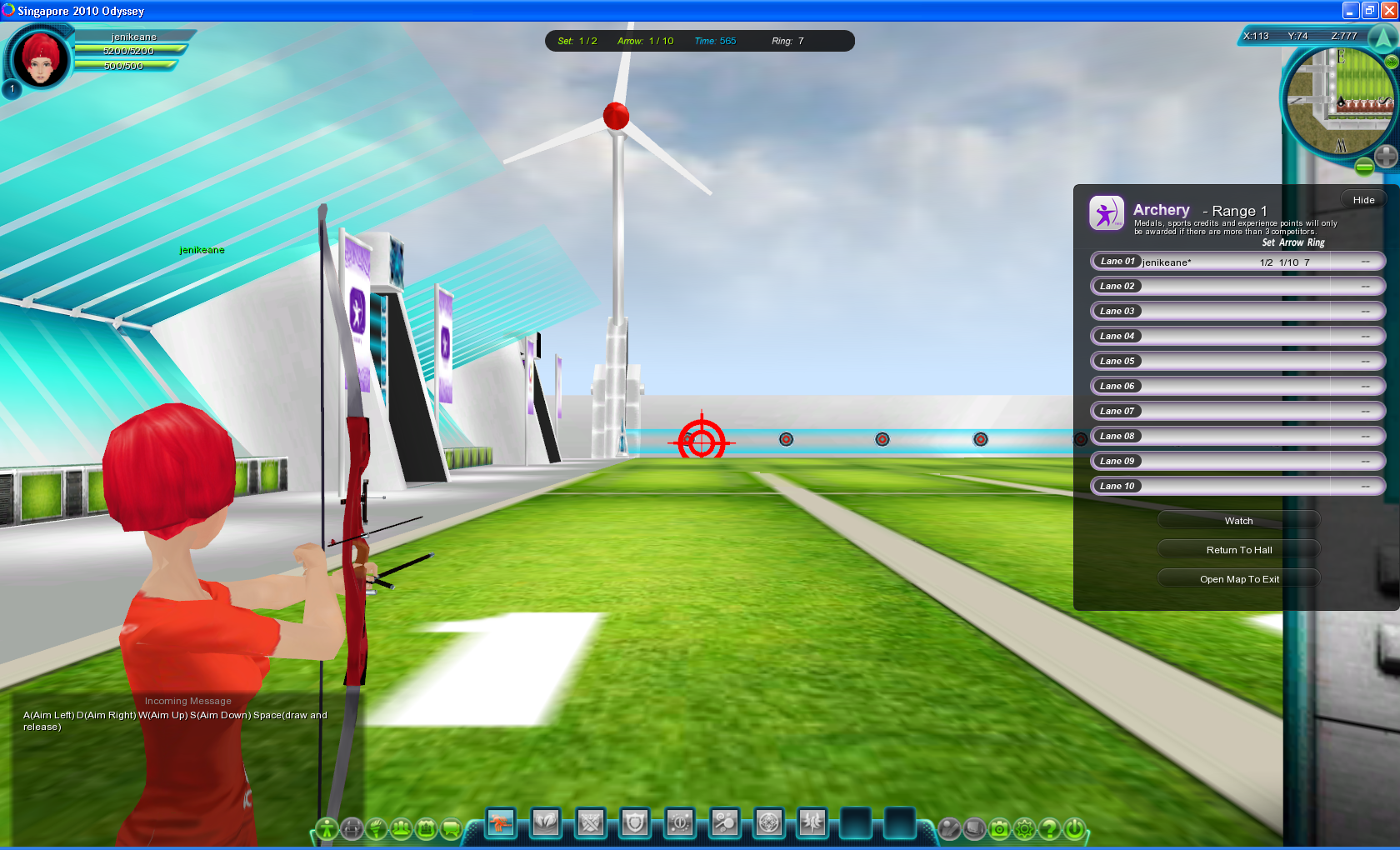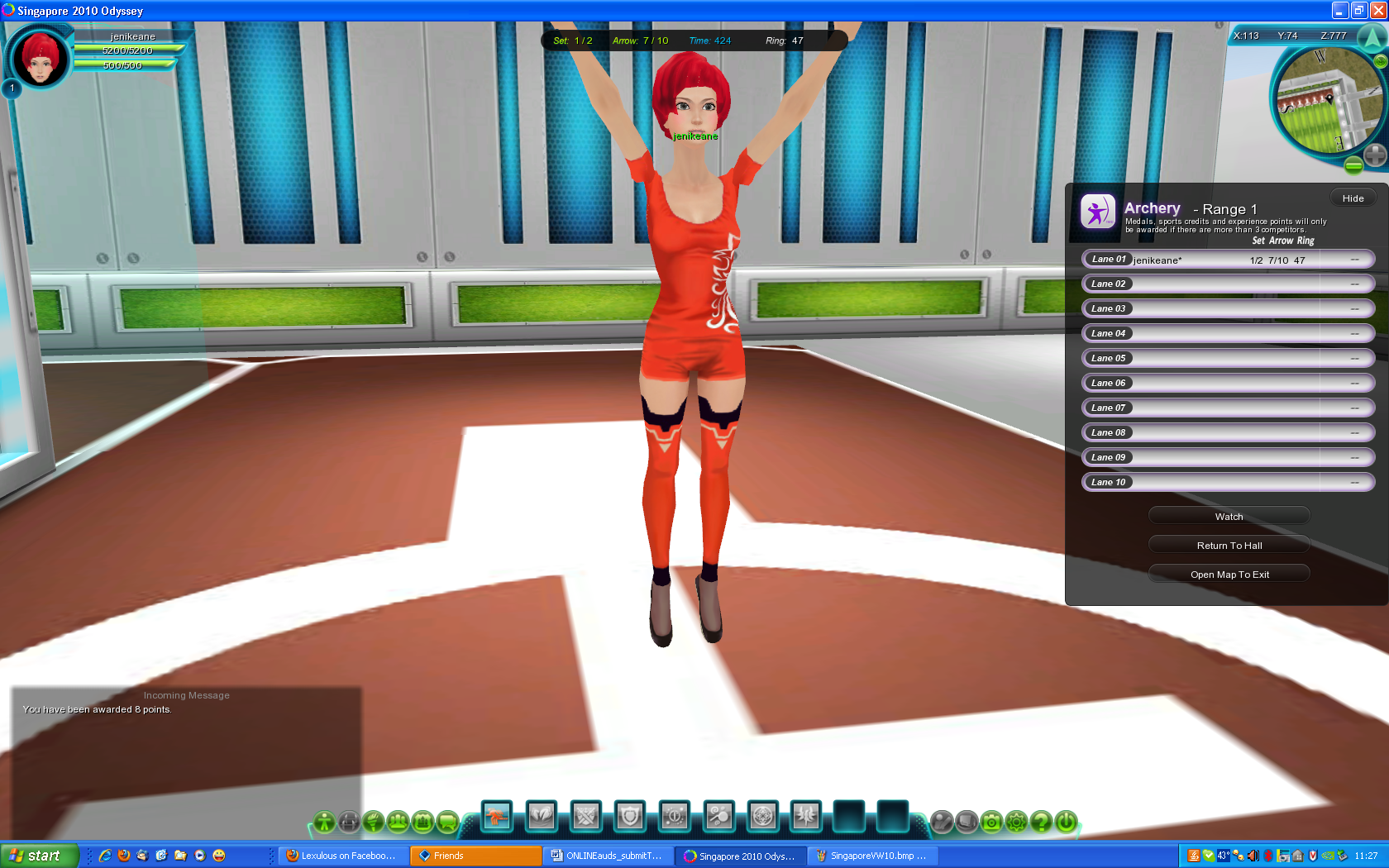A first of its kind happened recently in Los Angeles — a place known for many firsts of many kinds.
The first 3-D Gaming Summit was held to discuss how video and computer games could make the conversion to stereoscopic 3-D (aka S3-D) that appears to be sweeping movies and television. With Samsung and Panasonic already producing 3-D television sets, and American-based cable networks planning new cable ventures to broadcast entirely in 3-D, what does this mean for console games that connect to these television sets — and what could it mean if the gamer (who presumably is also the movie-goer and television watcher) starts to want such “in your face” dimensionality with in all of their gaming experiences, including MMOGs?
You can read a write-up on this meeting at the Huffington Post. What I found interesting from this piece was the conclusion that because of the 3-D graphics inside of the game, gamers would expect 3-D presentation that brings the game “out” to them. Others assert gamers will not want to wear the stereoscopic glasses necessary for the effect to be perceived (as without it, even a PS3’s great graphics will be significantly reduced, almost to Wii levels).
But more so all of this got me thinking about Nintendo’s attempt to bring virtual reality immersion to video game playing with Virtual Boy — a head-mounted display set that was cumbersome and tended to show all graphics as reddish. Fifteen years ago, the technology did not make the splash Nintendo had hoped, and since then no one has really attempted home virtual reality immersion technology: focusing instead on ultra-realistic graphics or naturalistic interfaces or internet-based gaming.
Could the push to stereoscopic 3-D be the next Virtual Boy? Or could it actually be a successful means by which to bring to the home the semblance of virtual reality immersion that right now only exists in the lab or in special arcades?
Posted in Blog, Workshops and Seminars.
Tagged with 3-D, video games, virtual reality.
By CarrieLynn
– 2010/04/24
In an earlier post, CarrieLynn asked “Do these facebook apps qualify to be virtual worlds? And why or why not?”. Here’s Raph Koster’s answer (very much worth reading in its entirety!) – it goes something like this: yes, of course they do, but then again: virtual worlds are not what they used to become.
Koster identify three core qualities intrinsic to the old virtual world-paradigm (SL/WoW-style worlds):
- Placeness
- Psudonymity
- Synchronous interaction and strong tie
- and then predicts: “Any application where you can ‘pick two’ will likely migrate away from virtual worlds, because the presence of the third is a barrier, not a benefit”. Facebook games provide examples: “Hey, there’s [Facebook game] a place that feels like a world, strongly weak-tie driven, without pseudonymity issues, and yet they carry with them all that praxis, all that other stuff that was elaborations on the core virtual world concept. It’s like a virtual world, “with the bad bits removed””
The post ends on a slightly sentimental note:
“For those of us who dream of a place we can’t possibly be, doing things we couldn’t do, as someone else, with friends… well, we’re a little bit out of luck. We’ll always have our Avalons and our Lost Worlds. They’re just not the future anymore.”
Posted in Blog.
Tagged with facebook apps.
By Bjarke Liboriussen
– 2010/04/23
March 2009, Bjarke Liboriussen joined the project as a research assistant. His core research interests include landscape aesthetics, architectural theory, computer game studies, and virtual ethnography.
In December 2009, Bjarke successfully defended his PhD thesis at The University of Southern Denmark’s Centre for Media Studies. It’s titled “The Mechanics of Place: Landscape and Architecture in Virtual Worlds” and is available here
Posted in Blog, Presentation.
Tagged with aesthetics, architecture, games research, virtual ethnography.
By dixi
– 2010/04/23
Documentarian Jason Spingarn-Koff has a film making the rounds of international film festivals this year — a documentary about Second Life. Life 2.0 explores many facets of Second Life and the people who engage with it, delving into questions about virtual economy, the blurring of real and virtual, and what leads people to lead these lives in cyberspace.
Interestingly, the filmmaker used his own avatar as a filmmaker in Second Life to document the activities of other avatars, making this the first feature film to use extensive amounts of inworld filming. Does this mean, then, that the documentary could be considered a machinima?
Currently the film is only making the festivals circuit, and there does not appear to be any information about wider distribution. If there are any updates to the distribution information, then it will be passed along via this blog.
Posted in Blog, Reviews.
Tagged with documentary, Machinima, Second Life.
By CarrieLynn
– 2010/04/21
Singapore Odyssey 2010 is a virtual world created by the Singapore government, via their special department the Info-Communications Development Authority, to both market the country as the site of the upcoming Youth Olympics, as well as experiment with how to create a virtual world to do just that.
I have gone into the world briefly, and encourages others to do so, as it is an interesting hybrid world: it is a social world on par with Second Life and Twinity, but it also has a gaming aspect to it that rivals sports games for console systems. As these series of screenshots will show, the world is designed for at least three functions that I have experienced: social interaction with other users, museum-like information displays, and games simulating the sports of the Olympics.




For the most part, the controls are similar to other social worlds, as the arrow keys control movement and the mouselook is utilized to move the camera. For the gaming sessions, the keys are similar to other MMORPGs in the use of AWSD and SPACE bar — although the arrow keys work just as well. The movement is a bit too quick, in that it can be hard to not overdo a movement when walking, and there does not appear to be any type of tutorial like Second Life, making this world more akin with Twinity (who also has a mirror Singapore in their world).
Overall, it is an interesting world, created for a particular purpose by a government, and perhaps indicates future such collaborations between designers, government, and special interests. If anyone knows of other instances of governments being involved in the design of virtual worlds, then please let us know.
Posted in Blog, Reviews.
Tagged with government, hybrid world, IDA, Singapore.
By CarrieLynn
– 2010/04/21
Project meeting at CBS
Date: 29 April 2010
Place: Copenhagen Business School, Kilevej 14
Room: K146
The Virtual Worlds project invites its partners, team members and research colleagues to a seminar on ‘Virtual Buildings and Cityscapes as communication technologies in the making’. We will look at concrete examples of collaborative virtual workplaces for architectural design and technologies that are based on virtual worlds or game technology and aims to create 3D, immersive environments where actors of the building industry may communicate about architecture or city planning from early phases of negotiation through the phases of facility management and demolition.
10-10.20: Welcome and introduction: Ursula Plesner, assistant professor at the Department of Managament, Politics and Philosophy, Copenhagen Business School
10.30-12.00: Game technologies for use in city planning: The case of RealSite, Jacob Østergaard, owner of Utopian City Scape
12-13: Lunch
13-14.30: Creative data – a dialogue between physical and virtual architecture, Odilo Schoch, Assistant Professor for BIM (Building Information Modelling) at the Centre for Information Technology and Architecture (CITA) at the Royal Academy of Fine Arts School of Architecture, Copenhagen.
Odilo’s talk includes an example on collaborative virtual workplace for architectural design supported by Anders Hermund, PhD student at the School of Architecture, and a remote presentation of parametric online models by David Kjøller, researcher at Aarhus School of Architecture
14.45-15.30: Virtual demolition and stillborn data – Tools, workers and models, Jesper Hundebøl, PhD, Danish School of Education, Aarhus University
The Virtual Worlds project will order lunch – please let us know if you are interested in participating (up.lpf@cbs.dk)
Posted in Blog, Workshops and Seminars.
Tagged with 3D, architecture, art, city planning, design, game technology, Virtual Worlds.
By dixi
– 2010/04/14







Recent Comments